We asked our website users a series of questions that, when analysed together, provide insight into whether someone is feeling lonely. We found that the people using the Relationships Australia website felt lonely at more than twice the rate of the general Australian population.
1 in 2 (56%) website users are socially lonely, while 43% are emotionally lonely. Emotional loneliness describes the lack of a significant person in your life, whereas social loneliness is the lack of a larger support network. Website users were most likely to agree that they missed having people around (69%) and that they experienced a general sense of emptiness (69%). They were least likely to agree that they had many people they could count on completely (72% disagreed).
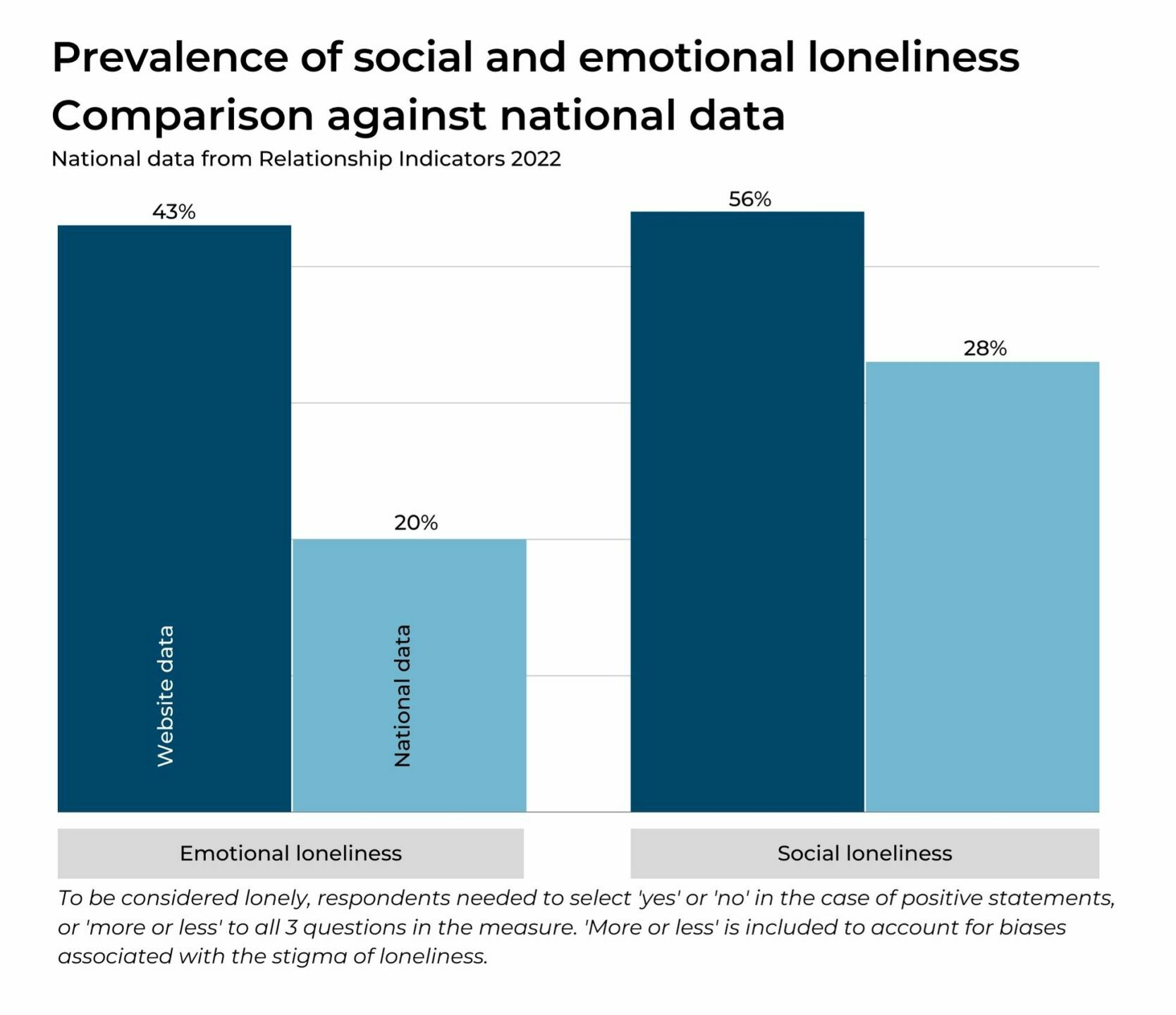
Loneliness and relationship troubles go hand in hand. Experiences with divorce and separation often lead to the breakdown of friendships as well (Albeck & Kaydar 2008; Aeby & van Hooff 2019). Loneliness is also a risk factor associated with experiencing abuse. For example, older people who are socially lonely are more likely to experience elder abuse (von Heydrich 2012). The same is true for people who experience domestic violence.
The findings from this survey suggest that relationship challenges may be a catalyst for loneliness. The higher rates of loneliness across all six measures of loneliness are evident – with 13% of website users agreeing with all six statements. This suggests Relationships Australia’s website users are experiencing concentrated and pervasive levels of emotional and social loneliness.
The pandemic has also been recognised for its impact on loneliness. During the pandemic, loneliness levels rose to affect 1 in 2 Australians (Lim 2020). Our Relationship Indicators project found that 18% of relationships (including partners, familial, friends and others) were significantly impacted by the pandemic. Notably, this survey data was collected in June 2022 – the impact of which can be seen in the graph below.
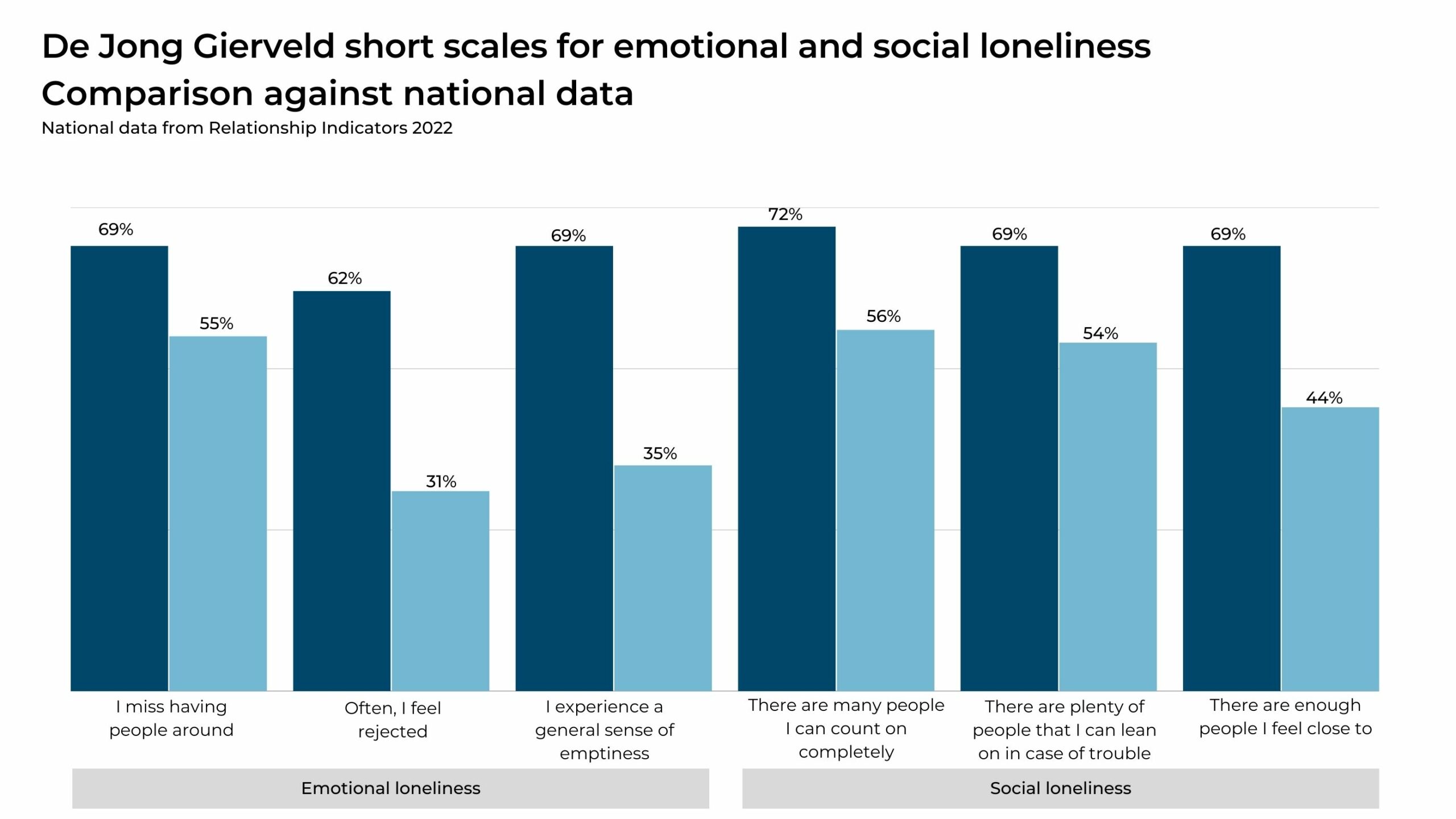
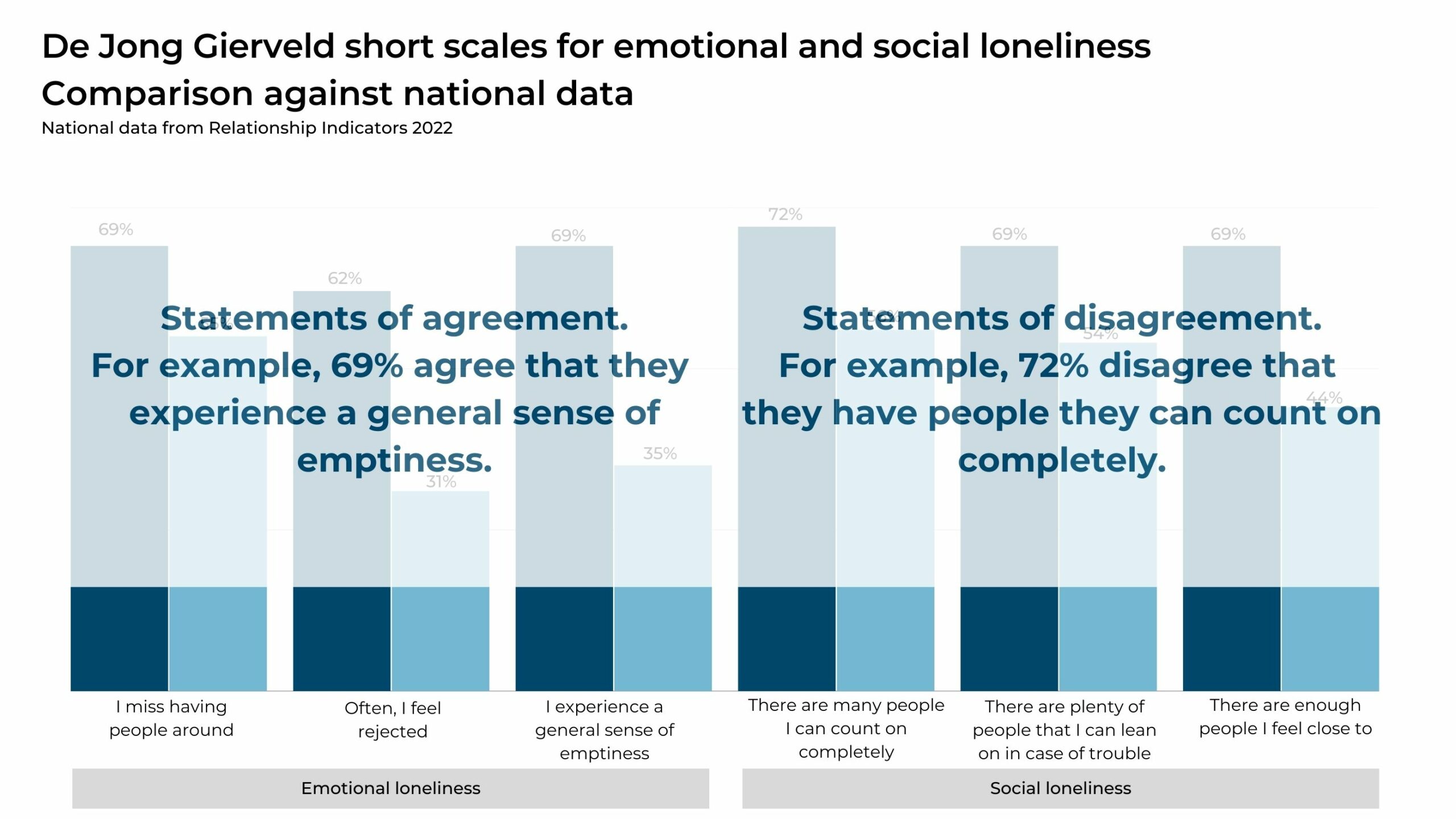
In the national dataset, people were much more likely to say they ‘missed having people around’ (55%). While only 1 in 3 (31-35%) agreed with the other measures of emotional loneliness. Traditionally, missing people was understood as a robust measure of loneliness, as those who weren’t lonely could access social interaction when they needed or wanted it. The increase in agreement with this statement, plus higher rates of social loneliness (28% meeting the criteria for social loneliness) suggests that the pandemic has impacted people’s capacity to meet their social and relational needs.
Loneliness is often measured as an individual concept, as researchers ask questions about personal shortfalls in relationships. Relationship Indicators also found that personal experiences with loneliness affected other relationships in people’s lives. 1 in 5 people who felt socially or emotionally lonely also said that the pandemic had a major impact on their most important relationship. Relationships Australia believes that these surveys provide insight into the compounding effects of relationship challenges, the pandemic and loneliness, but it is difficult to delineate the cause-effect nature of these phenomena.
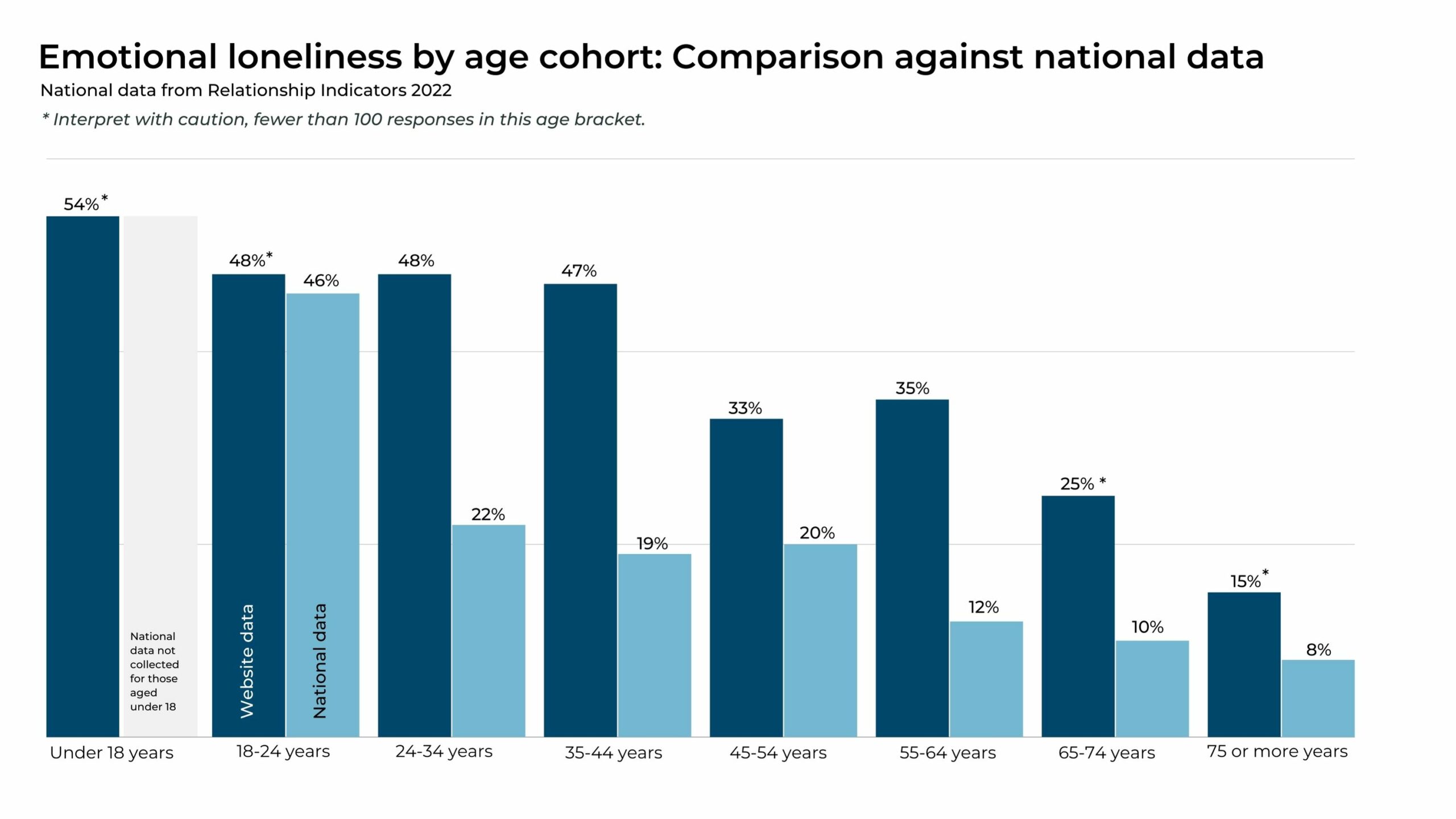
Emotional loneliness follows a negative correlation with age – young people are the loneliest, something which reduces as people get older. Social loneliness is less clear. It follows a more double-peaked mountainous shape – younger and older people are less socially lonely, however it peaks in mid-30s and again in mid-50s. Among our website users, prevalence followed these age-based patterns, but with greater pervasiveness.
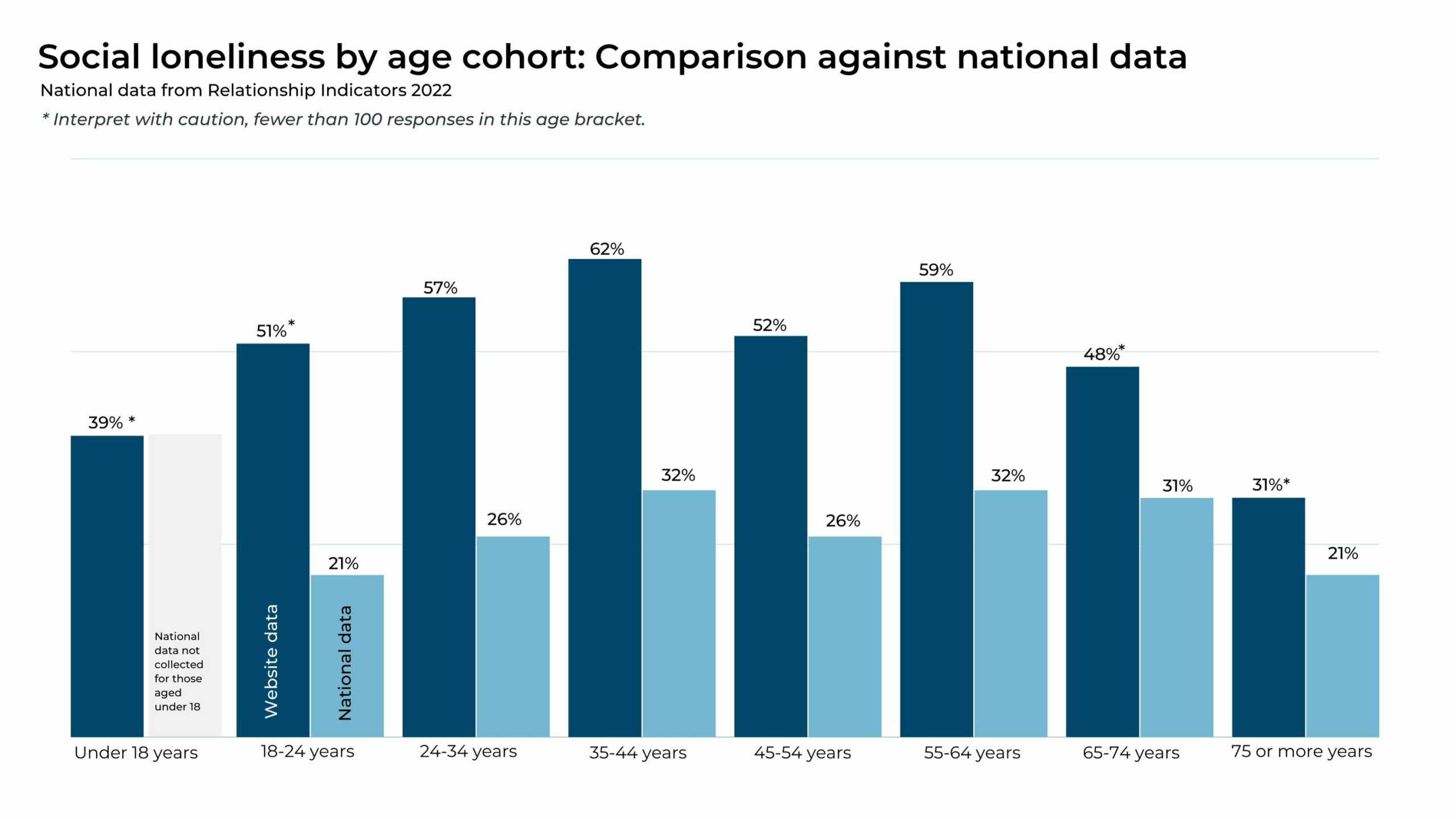
Loneliness is also somewhat predicted by people’s gender. While there is no discernible gendered difference for those experiencing emotional loneliness, social loneliness is more likely to be experienced by men than women (38% versus 30%). Among our website users, this difference was less significant (57% versus 55%), suggesting that relationship challenges may have a democratising effect on loneliness – leading men and women to experience it at similar, although higher, rates.

These findings are only a snapshot into the challenges people face in meeting their social needs during times of relationship crisis. However, the survey provides a clear indication that loneliness is prevalent among our clients and requires a tailored response.
Note on survey sample
This survey had 1046 responses. The sample was collected using the Relationships Australia national website. Participants ranged from under 18 to 75 or more years. 73% of the respondents identified as women, 25% as men and 1% as non-binary.
References
Aeby & Van Hooff. (2019). Who gets custody of the friends? online narratives of changes in friendship networks following relationship breakdown. Families, Relationships and Societies, 8(3), 411-426. doi:https://doi.org/10.1332/204674318X15271464535444
Albeck & Kaydar (2002). ‘Divorced Mothers, Journal of Divorce & Remarriage’. 36:3-4, 111-138, DOI: 10.1300/J087v36n03_07
Lim (2020). Senior Lecturer and Clinical Psychologist (2023) Lonely in lockdown? you’re not alone. 1 in 2 Australians feel more lonely since coronavirus, The Conversation. Available at: https://theconversation.com/lonely-in-lockdown-youre-not-alone-1-in-2-australians-feel-more-lonely-since-coronavirus-142724 (Accessed: 23 June 2023).
Von Heydrich, Schiamberg & Chee, G. (2012). Social-relational risk factors for predicting elder physical abuse: An ecological bi-focal perspective. International Journal of Aging & Human Development, 75(1), 71-94.